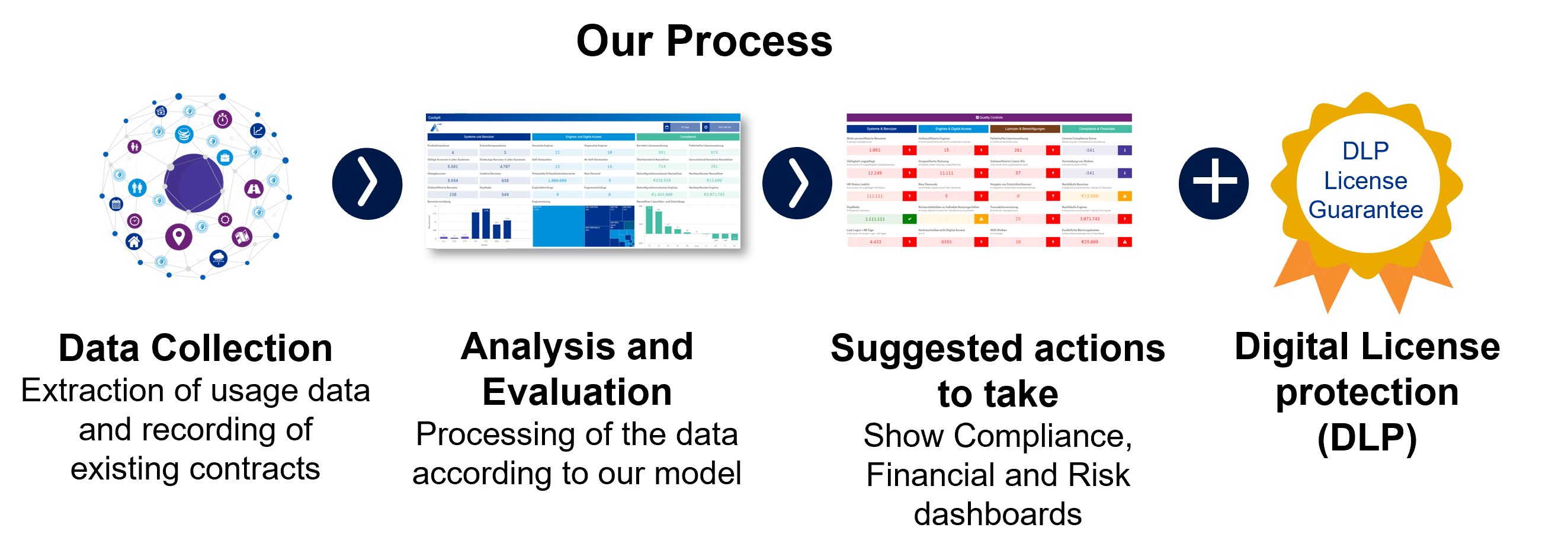With the conversion of the licensing model to S/4HANA, companies are increasingly confronted with a surprising and costly realisation: Licensing is now additionally based on authorisations.
In the price and condition lists for the ERP Central Component (ECC) software, SAP already refers to the licensing obligation of a defined user to run the SAP software according to their scope of authorisation. Up to now, however, actual use has been used as the basis for licensing in practice. The user's licensing obligation for S/4HANA continues to apply according to the authorisation granted. The innovation now is that with the introduction of S/4HANA Trusted Authorisation Review (STAR), an evaluation tool for migration has been created that checks the licence allocation based on the assigned authorisations.
Avoid high additional costs
This new evaluation tool makes it possible to determine the required licence type for users and roles based on authorisation objects and characteristics. For SAP customers who do not yet have an optimised authorisation concept and licence management, this can lead to a significantly increased need for expensive professional licences. For many companies, this means a considerable financial risk due to significant additional costs. However, these can be avoided through an efficient authorisation concept using the agreed SAP licence/contract provisions.
Optimise licensing
Active SAP licence management is crucial, as each user must be assigned a specific licence - depending on the authorisations assigned in the different SAP systems. An analysis of the required licence assignments already contributes significantly to transparency and compliance. However, cost savings and efficient licensing are achieved in particular by regularly reviewing and optimising roles with regard to their licence usage. Since many departmental profiles change over the years and are accompanied by the allocation of new authorisations, the assigned licences must be reviewed continuously. In order to minimise costs, the proven minimum principle of "as little as possible, as much as necessary" applies here. In order to determine the current status, an analysis of the authorisation concept from a licensing perspective is necessary. Usage analyses and the comparison between potential and actual usage (Can Do vs. Did Do) should be carried out at set intervals to identify optimisation potential. Even the most expensive licence type by far, "Developer Access", requires a critical examination and deep understanding of the technical and contractual framework conditions.
Dmitrij Spolwind
Partner, Consulting, Lighthouse Germany - AI & Data Solutions
KPMG AG Wirtschaftsprüfungsgesellschaft
Ayhan Aslan
Senior Manager, Consulting
KPMG AG Wirtschaftsprüfungsgesellschaft
Hedge against financial risks
With Authorisation & Identity Management, companies can automate their authorisation concept and make it cost-efficient. In this way, they ensure that the role concept and the use of licences are optimal and in harmony. High licence costs due to an overly generous authorisation concept can thus be avoided. In addition to optimising licences, an efficient SAP authorisation concept also enables compliance requirements to be met and avoids access risks. This results in an increased security structure, optimised risk management and increased productivity.
Our solution provides transparency across your SAP systems
KPMG's Authorisation & Identity Management (AIM) solution includes data-driven analytics and enables full transparency across SAP systems. With the help of AIM's SAP licence management, you get an optimised licence situation. This is also helped by the technical and financial dashboards, which allow you to continuously plan, monitor and control your licence compliance and finances. In order to identify optimisation potentials, the data-driven analyses can be carried out both based on actual usage and based on the assigned authorisations. With the cost simulation based on the KPMG Pricing Benchmarks and the SAP product portfolio for ECC and S/4HANA, you can determine, plan and implement a suitable licence and contract model in the course of your S/4HANA transformation.



